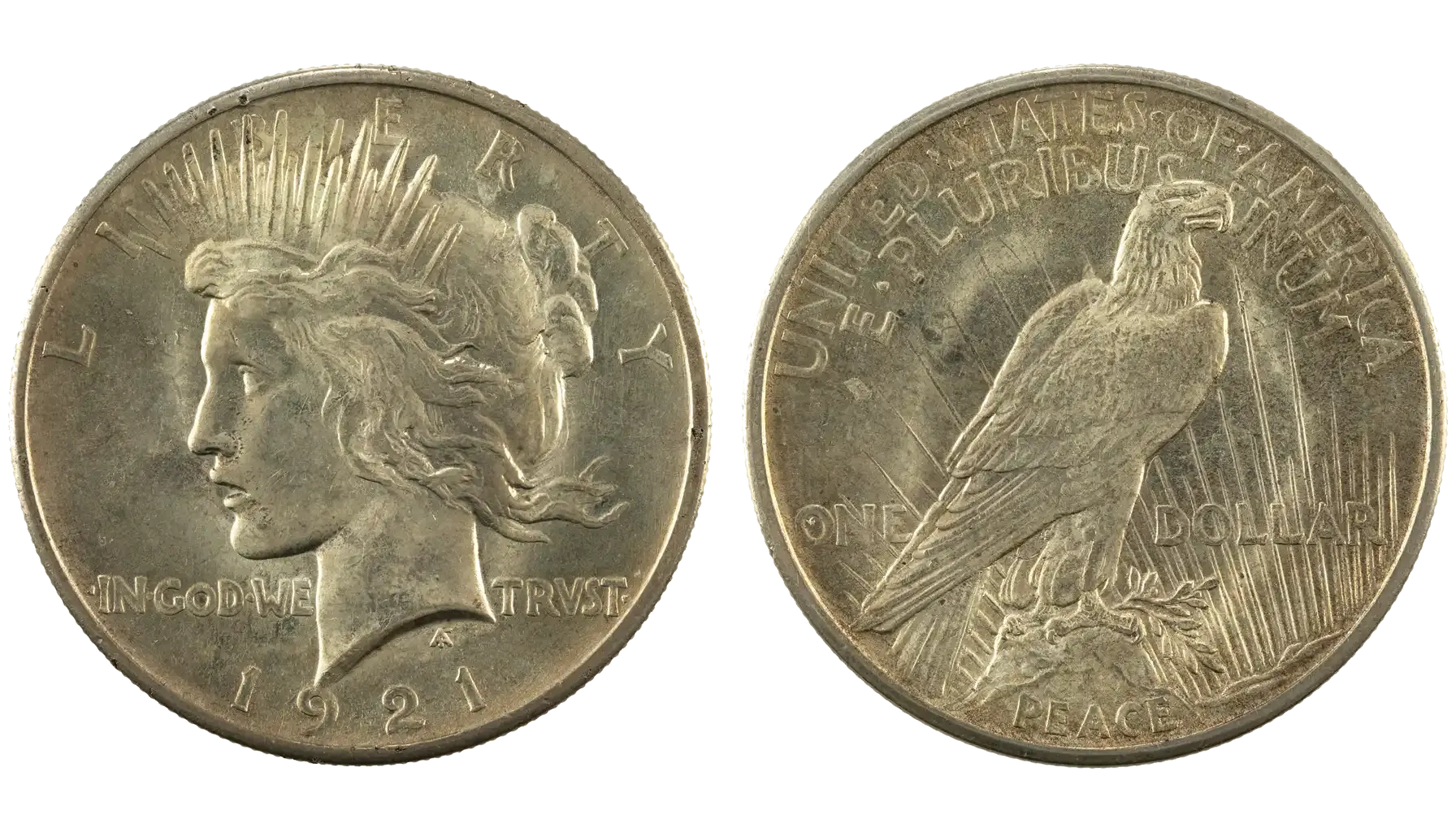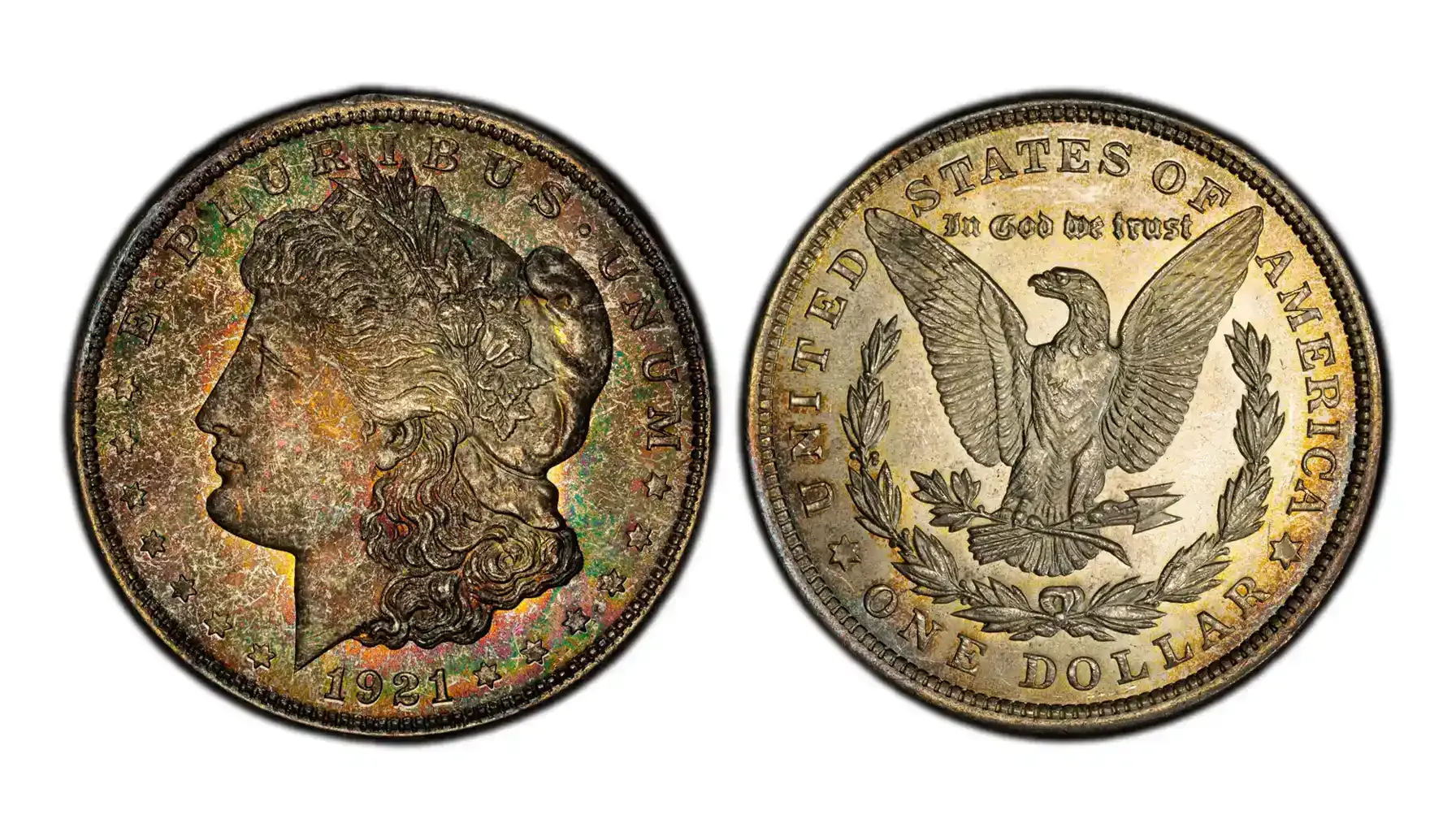Contents:
The value of coins is a flexible constituent that may severely fluctuate over time, especially when it comes to the numismatic creations of the past. When the world was different, and mints could produce coins of precious metals, their inherent worth was not directly associated with denominations and often far exceeded the face value stamped upon them.
Amidst the crisis, any item may turn into a symbol, yet not every symbol may survive… One of the greatest examples of how historical events affected the coin and involuntarily made it a bit more valuable than expected is the 1942 war nickel. What are its main types? How much is a 1942 nickel worth? And which features identify this coin as rare? Let us check.
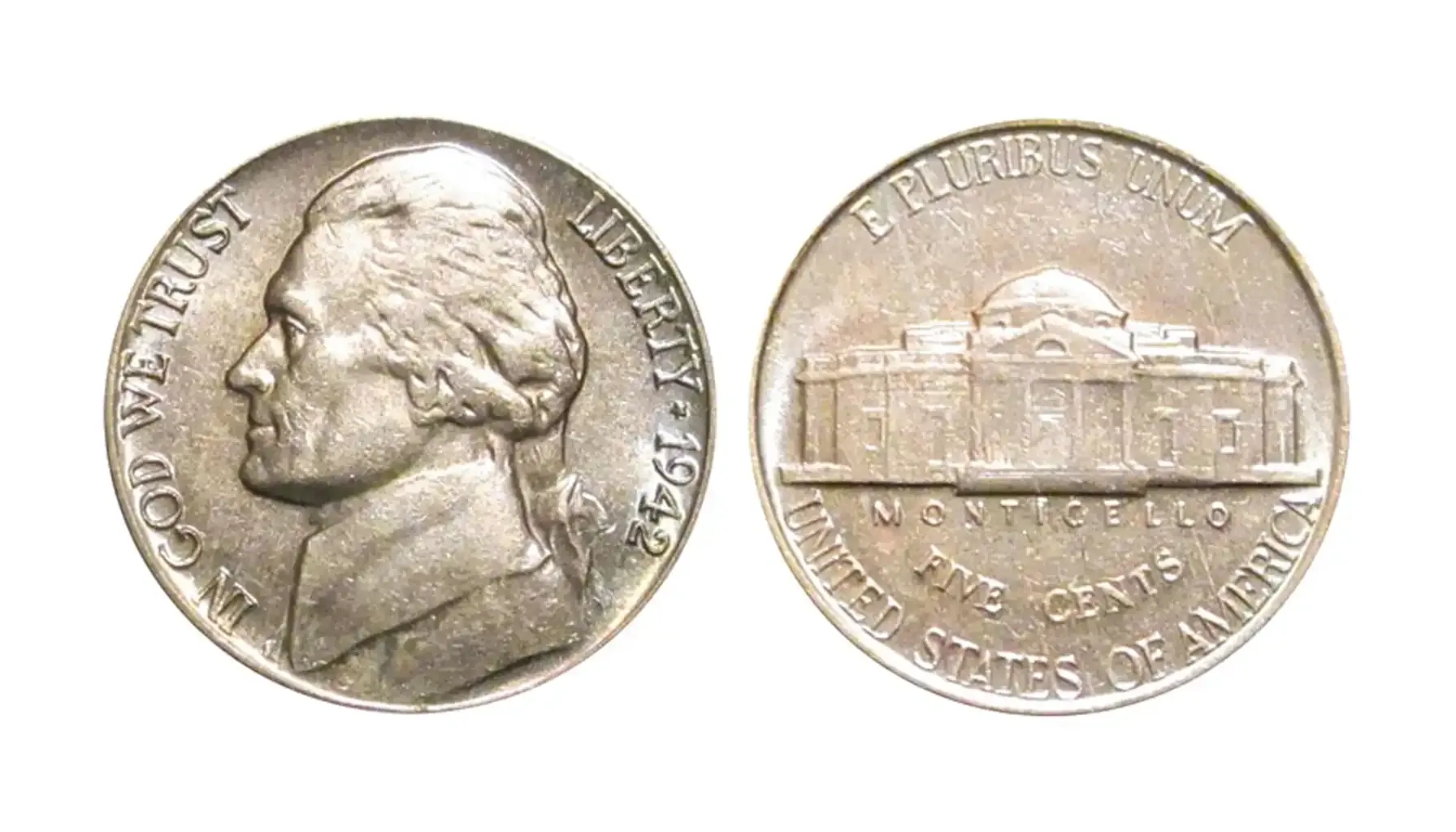
Quick Overview of the 1942 Jefferson Nickel
By the end of 1941, when World War II was raging all across Europe, the United States had not yet officially entered the conflict. This changed on December 7, 1941, when Japan launched a surprise attack on Pearl Harbor. One day passed, and the US finally declared war, joining its allies on the battlefield. With the shift in rhetoric came massive changes to the industrial sector, resource allocation, and coin production, too.
Nickel, the main component of the 5-cent coins, was the key metal used in military production (e.g., armor plating), which is why it was urgently needed to preserve nickel supplies for military use only. But what would they do with the coins, though? As a response, the US Mint aspired to modify the composition of the Jefferson nickel to a new formula that would include silver. This is how military needs would not interfere with ones of the monetary sector.
Related article: The 1941 Nickel: A Transitional Coin Before Wartime Changes
1942 made coins legendary in both cultural and financial terms, for they turned into the symbols of national sacrifice, which endured the hardships and entered a new, post-war era with grace.
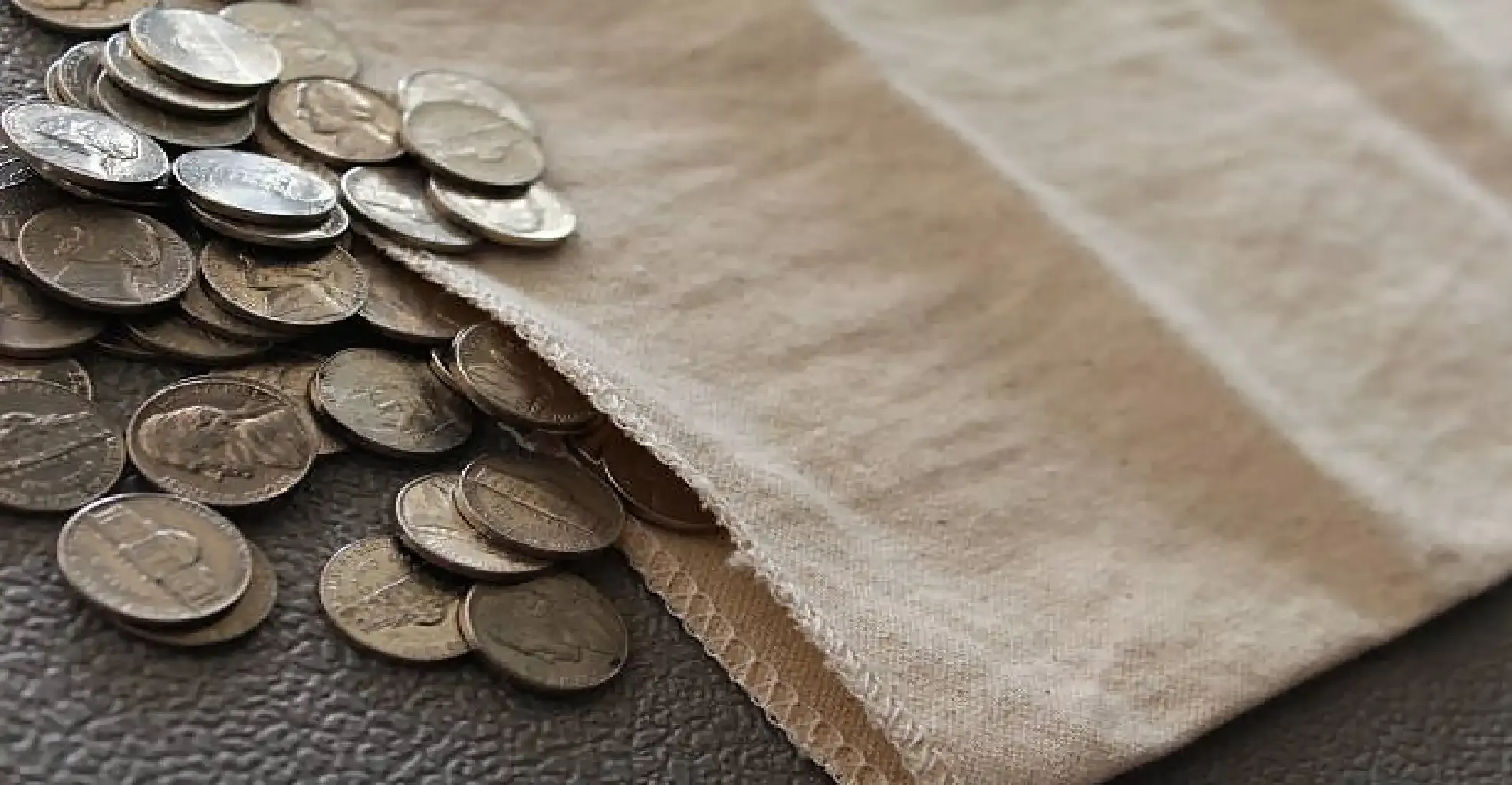
Design Features and Specifications
Obverse: The obverse of the 1942 silver nickel showcases a left-facing portrait of Thomas Jefferson. Schlag, the designer of the coin, aimed for a realistic and respectful depiction, capturing his profile along with the motto “IN GOD WE TRUST” to the left and “LIBERTY” with the date “1942” appearing to the right.
Reverse: The reverse, in turn, features Monticello, Jefferson’s Virginia estate, in a neoclassical architectural style, with the Latin motto “E PLURIBUS UNUM” (“Out of many, one”) at the top, the name “MONTICELLO” beneath, the denomination “FIVE CENTS,” and “UNITED STATES OF AMERICA.” As for the mint mark, it might appear either above Monticello (for silver coins) or to the right of it (for nickels proper).
Specification | Standard Nickel (Early 1942) | Silver War Nickel (Late 1942) |
Composition | 75% Copper, 25% Nickel | 56% Copper, 35% Silver, 9% Manganese |
Weight | 5.00 grams | 5.00 grams |
Diameter | 21.2 mm | 21.2 mm |
Thickness | 1.95 mm | 1.95 mm |
Edge | Plain | Plain |
Mint Marks | None for Philadelphia “D” for Denver | “P” for Philadelphia “S” for San Francisco |
Mint Mark Location | To the right of Monticello | Above Monticello |
Designer | Felix Schlag | Felix Schlag |
First Introduced | 1938 (Jefferson Series) | October 1942 (Silver Version) |
Key Varieties of 1942 Nickels per Mint
1942 5C Nickel
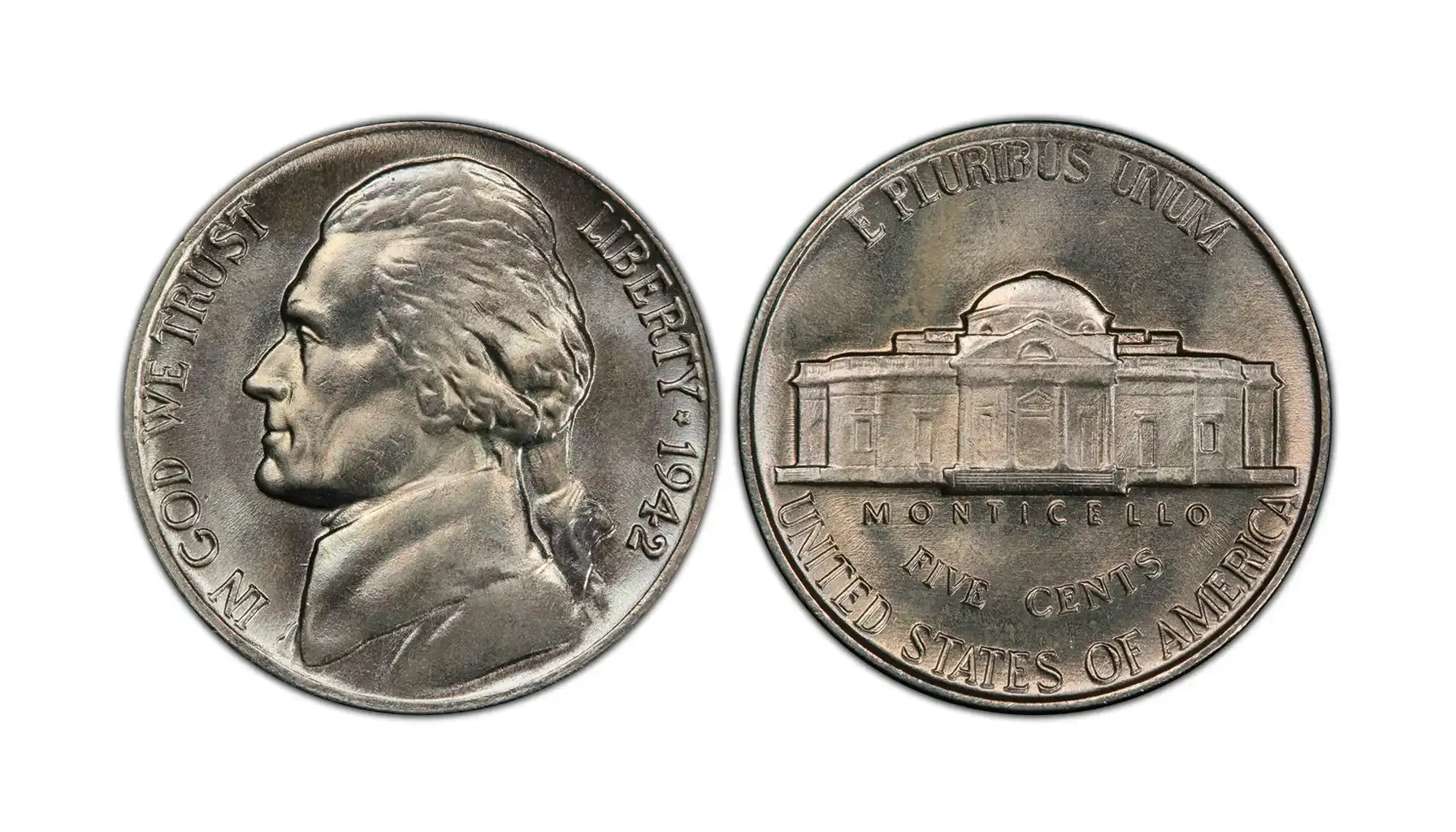
Produced by: the Philadelphia Mint
Mintage: 49,789,000
Auction Record: $11,500 for MS67
The standard 1942 nickel no mint mark was minted by the Philadelphia Mint with the classic copper-nickel composition before the wartime silver switch. It could have been an ordinary piece, but the history made its changes and turned a common 5-cent instance into an asset with investment potential hidden.
1942 P 5C Silver
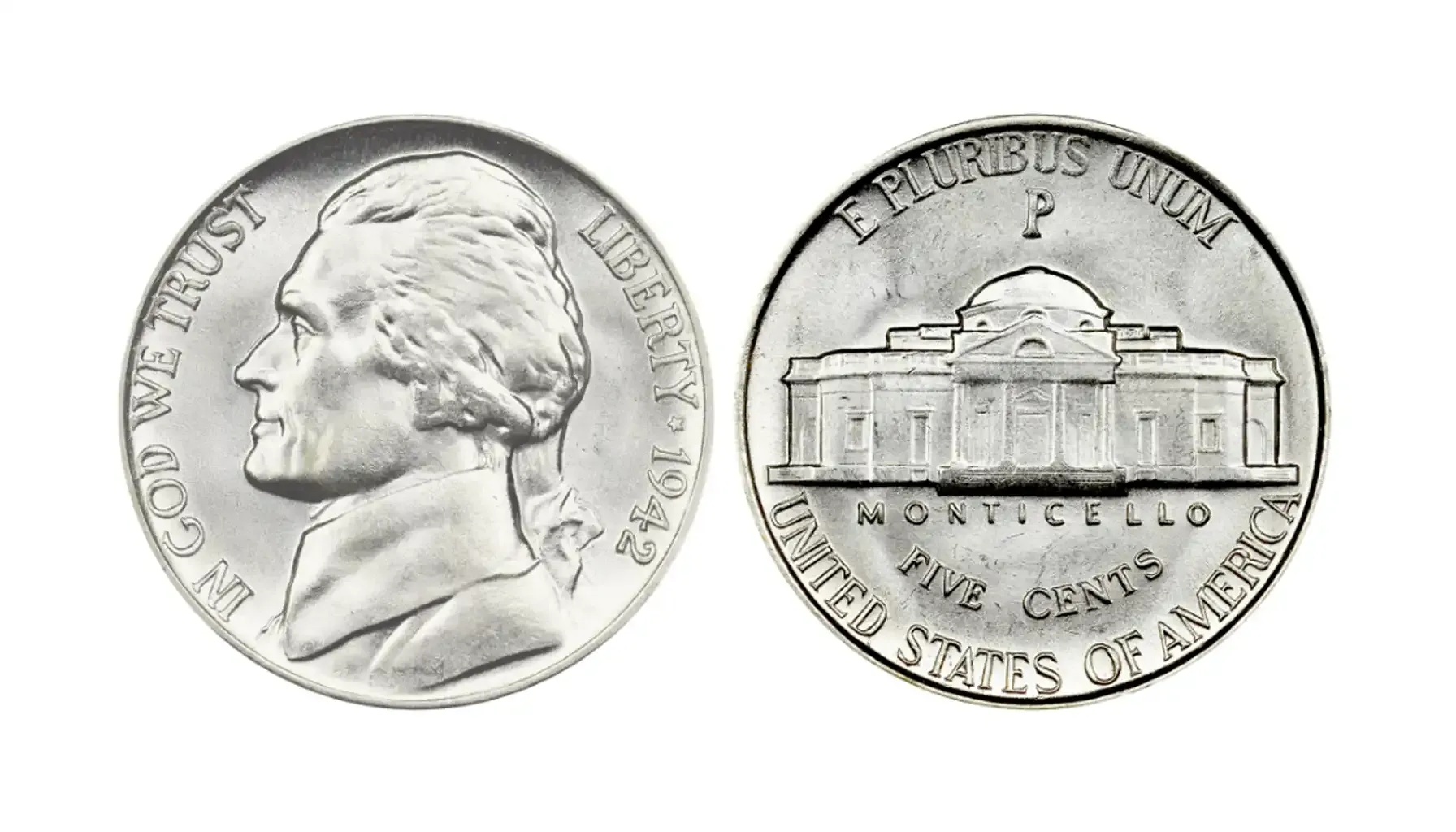
Produced by: the Philadelphia Mint
Mintage: 57,873,000
Auction Record: $4,112.50 for MS68
The wartime silver 1942 P nickels from Philadelphia were different from the ordinary pieces due to the notably large “P” mint mark above Monticello, marking the first use of “P” on US nickels. Its silver content adds intrinsic and collector value.
1942 5C Nickel (Proof)
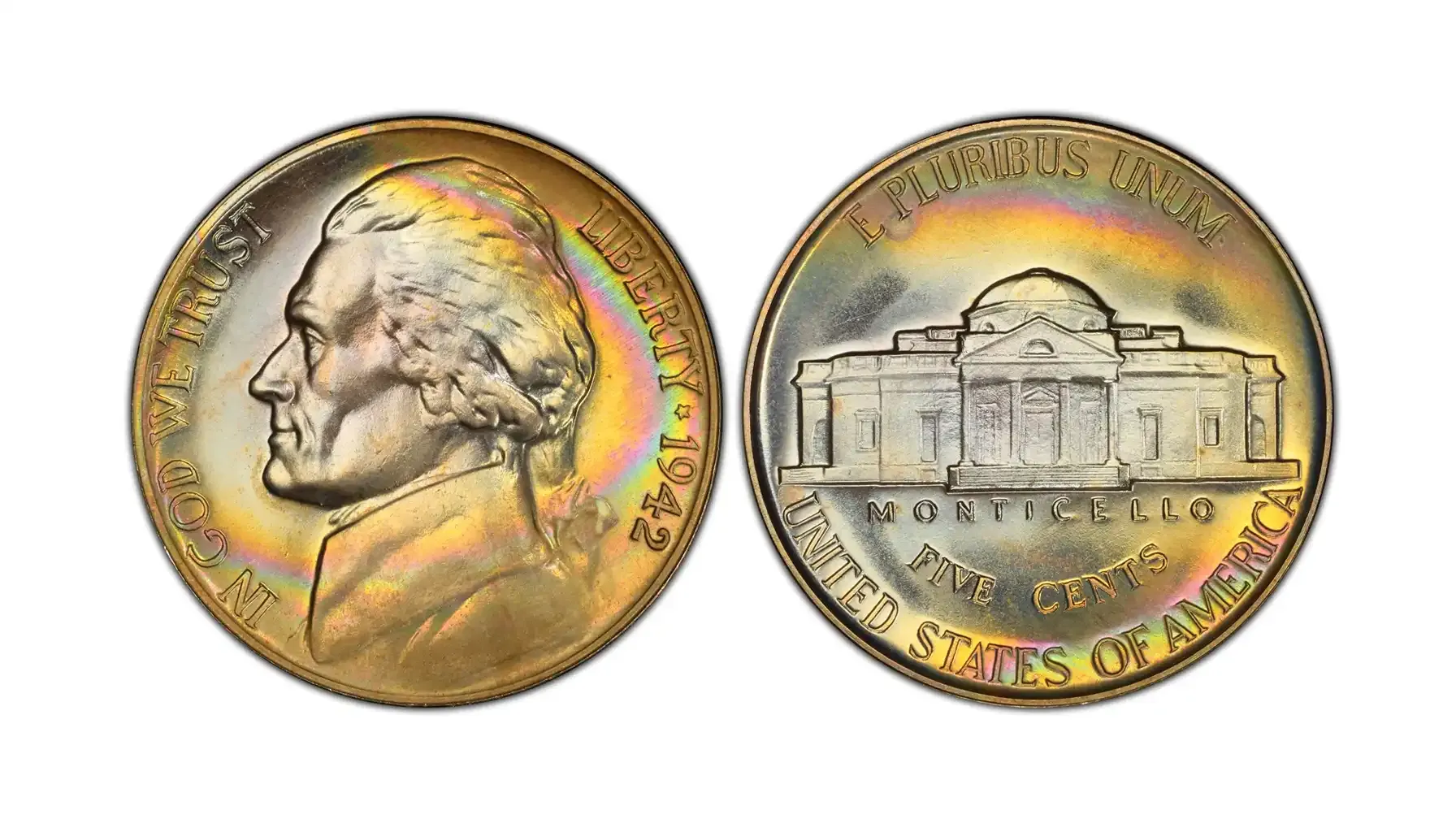
Produced by: the Philadelphia Mint
Mintage: 29,600
Auction Record: $16,450 for PR68+
Here is the last issue produced in Philadelphia with the regular copper-nickel alloy in 1942. These were made for collectors and are much rarer than circulation strikes.
1942 D 5C
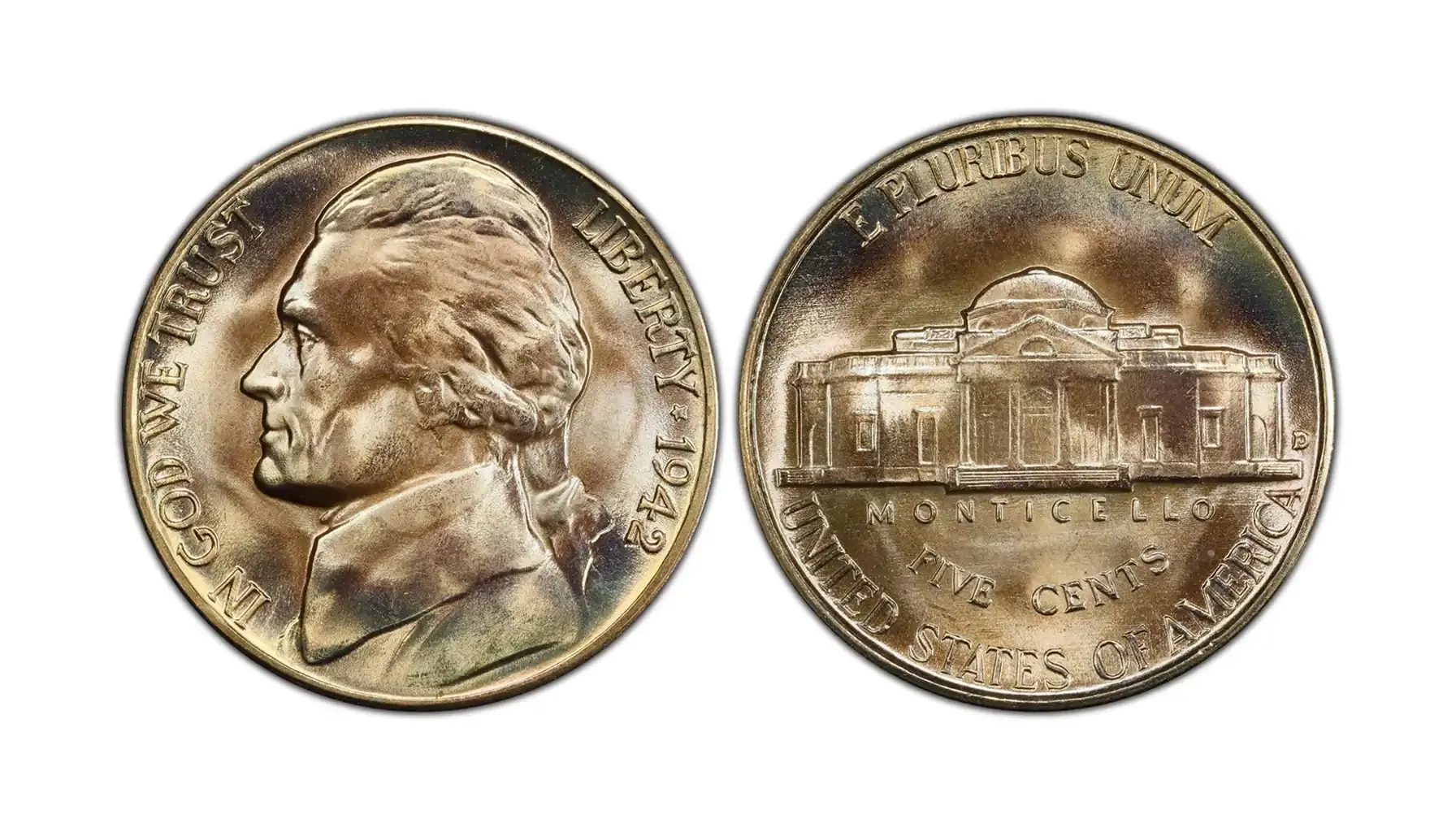
Produced by: the Denver Mint
Mintage: 13,938,000
Auction Record: $4,320 for MS68FS
The Denver-minted creations are the 1942 D nickels with the copper-nickel composition, identifiable by the “D” mint mark. In fact, it is less common than the Philadelphia coins but highly sought in high grades.
1942 S 5C Silver
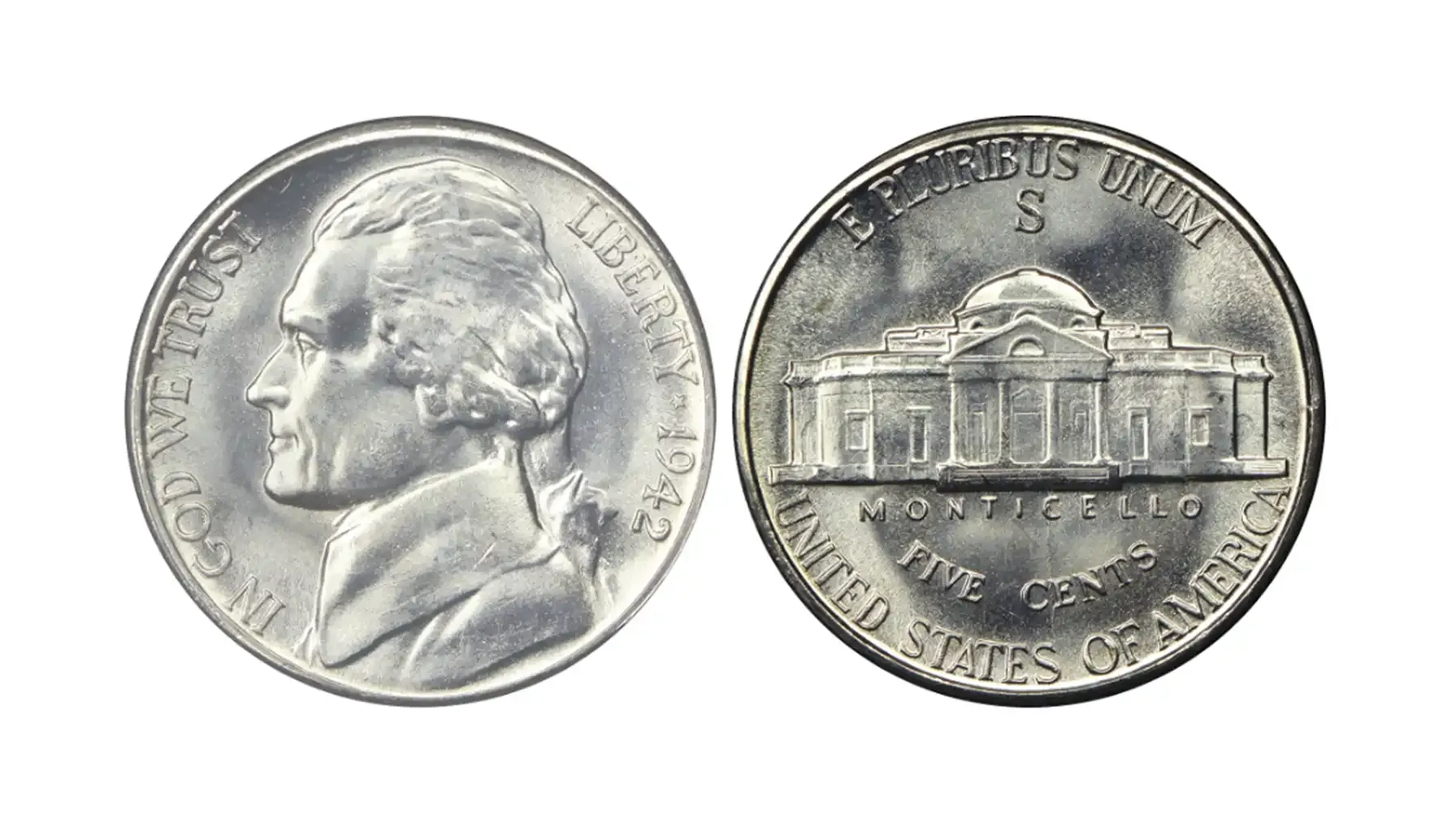
Produced by: the San Francisco Mint
Mintage: 32,900,000
Auction Record: $1,380.00 for MS68
One and only coin issued by the San Francisco Mint in 1942 is the 1942 S nickel, which shares the same composition as the Philadelphia silver variety but generally commands lower auction prices.
How to Identify Your 1942 Nickel?
Two compositions and three mints make it a bit more flabbergasting to identify which coin is genuinely a nickel from 1942. To make it accurate, do not neglect the following steps:
Check the Mint Mark: Flip the coin over and look at the reverse side. If there is a large mint mark (P or S) above Monticello, it is a wartime silver nickel. If the mint mark is to the right of Monticello (or there is no mint mark at all), it is definitely a standard copper-nickel instance.
Look for the Year: All coins should bear 1942 on the obverse (front), next to LIBERTY.
Test for Silver: Silver nickels have a duller, grayish tone and may show signs of toning (rainbow or dark patches).
Use Coin ID Scanner for Detail: Utilize external tools like Coin ID Scanner to identify coins and detect special features (e.g., mint marks, errors, or other attributes). This is the easiest way to learn more about the coin and check its value on the spot.
Common Errors and Their Types
Repunched Mintmark (D/D – D/Horizontal D)
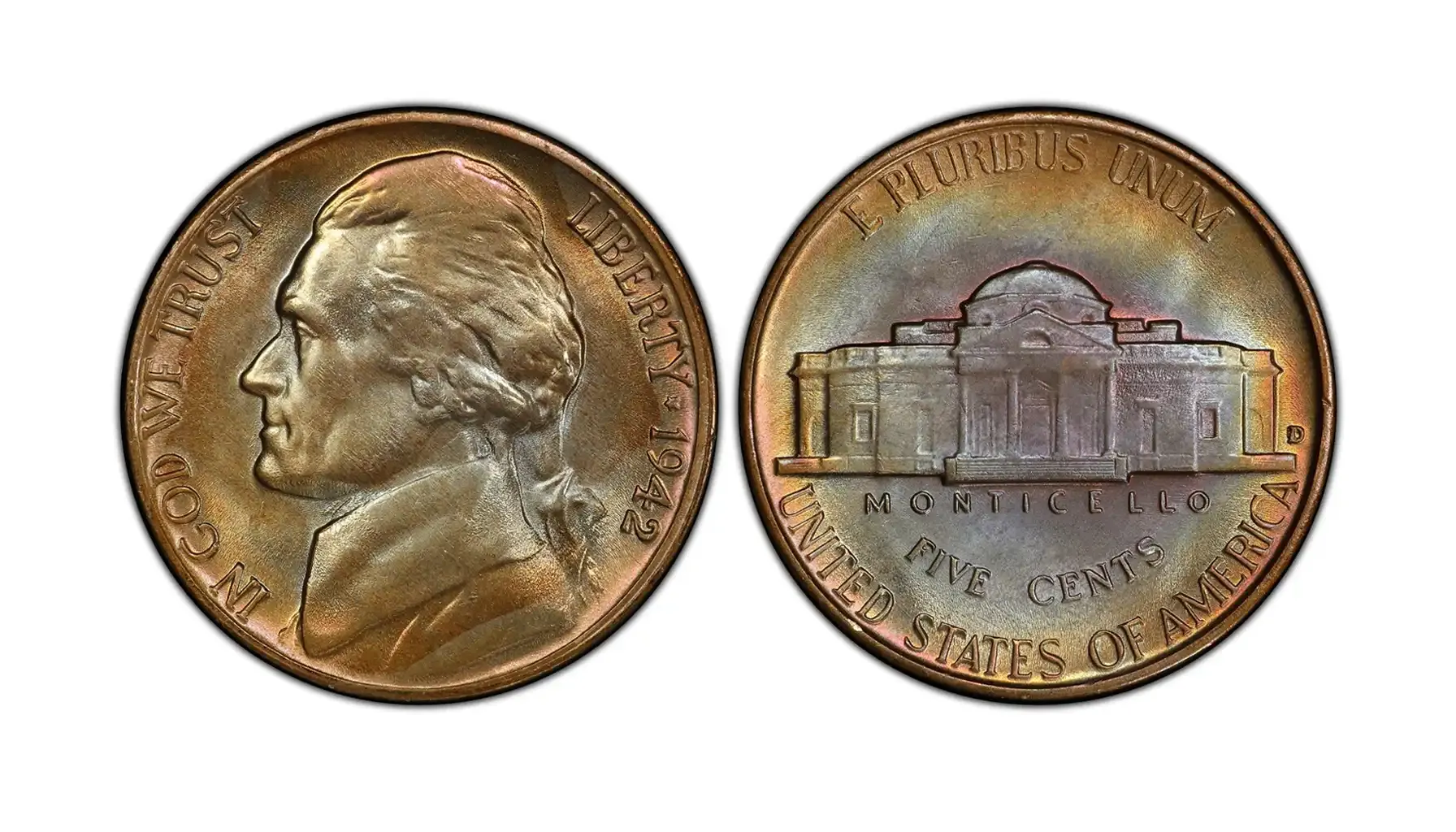
Estimated Value: $32,200
D/D – D/Horizontal D is probably the most wanted repunched mintmark errors ever associated with this coin (sometimes tilted or horizontally aligned beneath the original). It is extremely rare and highly desirable among specialists.
Liberty Touching Rim
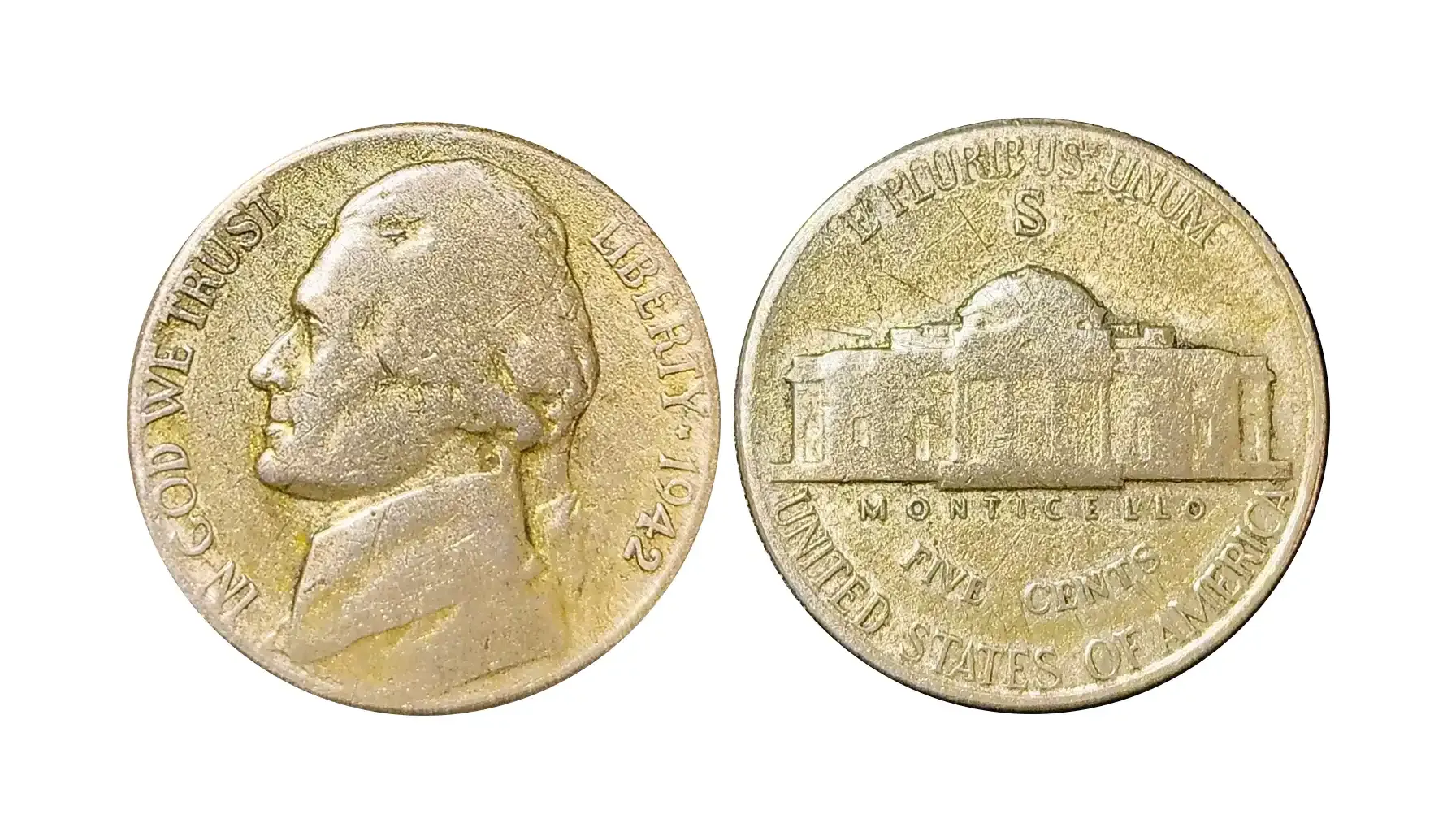
Estimated Value: $1,200
On this variety, the word LIBERTY is unusually close to the coin’s rim, often due to a misaligned die that occurred during production. The closer the contact, the higher the value, in fact.
Doubled Details (Double Bow)

Estimated Value: $542
Here is one more specific suberror that significantly increases the prices (imagine $0.05 vs. $500!). It is a minor yet collectible doubling on the bow of Jefferson’s hair, usually caused by a misaligned hub during production and mainly visible under magnification.
Peeling Lamination
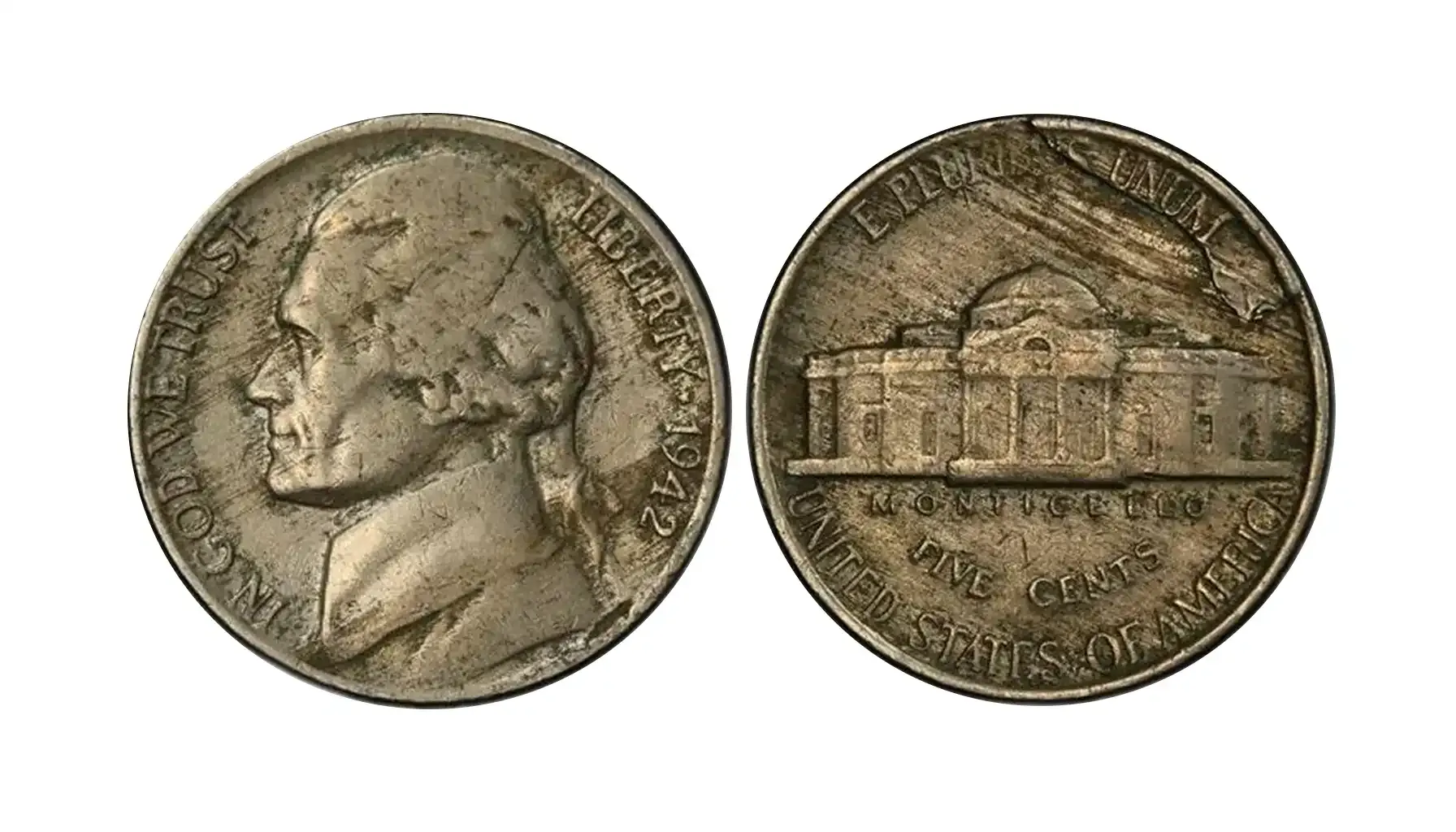
Estimated Value: $300
This error occurs when a part of the metal surface begins to peel due to improper bonding of alloy layers during minting. It is most noticeable on the coin’s high points, which is why even a beginner may identify this deviation on the spot.
1942 Nickel Value Chart: By Grade and More
The value of nickels can be surprising, as it ranges from face value to thousands of dollars per item. This, however, depends on different aspects like silver content, minting facility, and grade, not to mention.
Mind that prices do fluctuate. Before buying or selling, it is always essential to check the most current pricing by consulting recent auction records, certified dealers, or databases maintained by trusted grading organizations like NGC (Numismatic Guaranty Company) or PCGS (Professional Coin Grading Service). So, what is a 1942 nickel worth?
Variety | F-12 | XF-40 | AU-50 | MS-65+ | MS-65FS+ |
1942 | $0.40 | $0.85 | $1.20 | $6 | – |
1942 D | $0.80 | $1.50 | $2.50 | $15 | $150 |
1942 P | $2.00 | $3.25 | $4.75 | $25 | $95 |
1942 S | $2.25 | $3.75 | $5.50 | $28 | $85 |
1942 Proof | – | – | – | $50 | – |
Mind that general values are more illustrative than those presented by the most reputable auction houses. Auctions are usually influenced by bidding wars, which might illogically affect the value of the item sold.
Born of wartime necessity, raised and cherished as a beloved relic. It is the coin that remains a rewarding piece for collectors who value both history and hidden worth.


